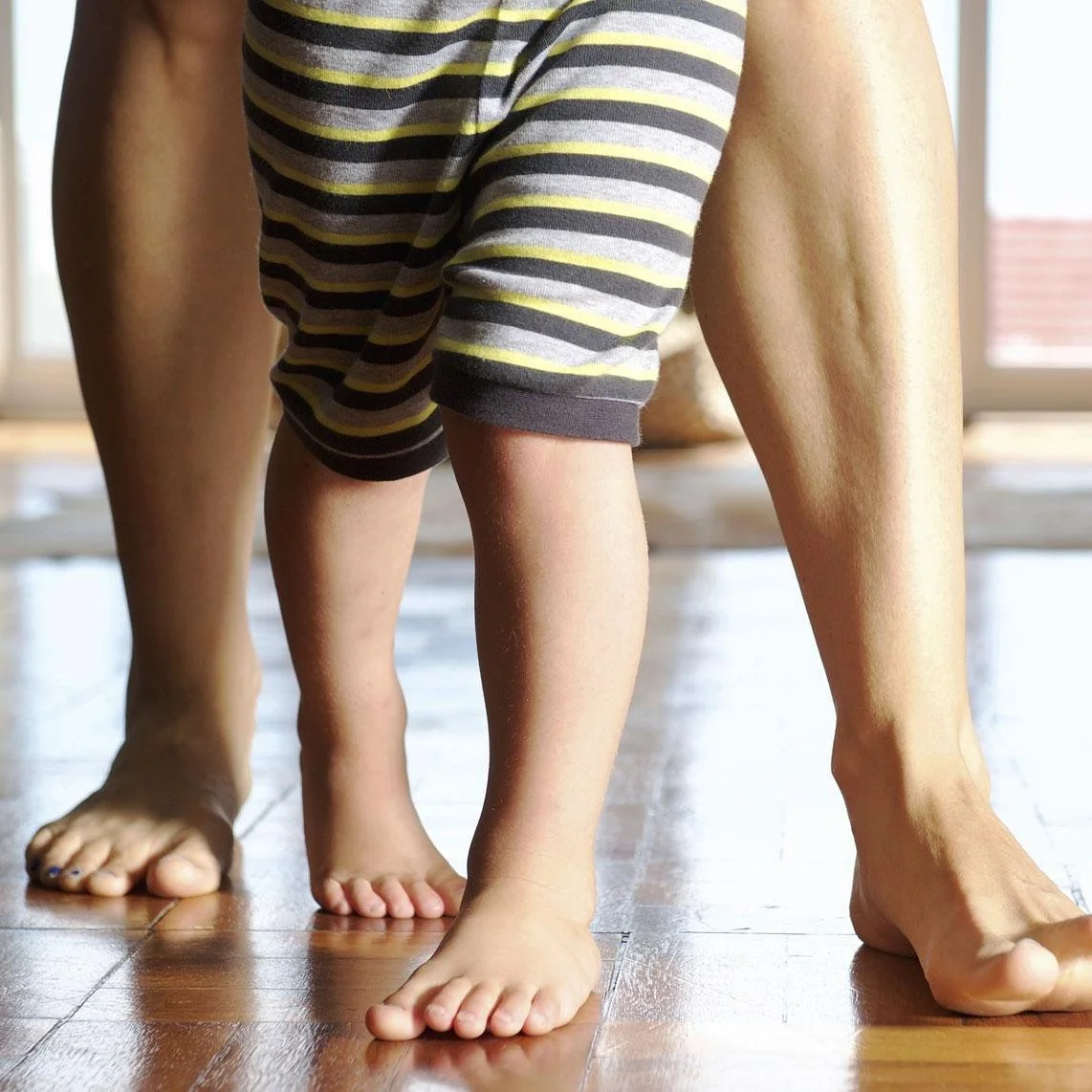Funny Feet
Cooper, Cold Feet & Concerns: Understanding In-Toeing in Toddlers
Cooper, a gorgeous 18-month-old, walks into my office barefoot. No shoes, no socks—on a winter’s day no less. Mum quickly explains: “He’s been falling over his own feet. The in-toeing has gotten so bad he’s scraping his toes. Shoes and socks hurt too much!”
Foot posture is a common presenting concern for little ones in our practices. Parents often arrive worried that their child’s unusual gait or leg position is permanent. But as we know, bowed legs and inward-turning toes are often part of normal development in the early years.
Developmental Leg Alignment
Genu varum (bowed legs) and in-toeing are typically seen in children under 2–3 years of age.
A simple check: Have the child stand with ankles together. If there is no more space than an adult fist placed between the knees, this is generally within normal limits and self-resolving.
Around 2–3 years of age, many children shift into genu valgus (knock-knees), which may appear concerning but usually resolves by age 8–9.
Digging Deeper When Kids Are Falling
It is absolutely normal for an 18 month old to fall over their own feet. As they get more confident with bipedal motion, they speed up to try to keep up with their excitement for life. However, they often haven’t quite managed the coordination of turning while running yet, so will stumble frequently. Also, it takes a while to get used to shoes, rugs and changing surfaces.
A two year old will generally be much more confident with speed, balance, turning and jumping. However, if they have been on the slower side of the development trajectory, they may still have frequent falls. A warning bell is more associated with a confident walker/runner who suddenly digresses and falls a lot. Before attributing tripping and falling solely to leg posture, consider other factors:
Visual disturbances (difficulty seeing hazards, depth perception challenges, potential double vision with an eye turn)
Vestibular or cerebellar challenges (delayed or disorganized balance responses)
Recent head trauma
Adducted forefoot (from intrauterine positioning, which may have been overlooked in infancy)
Other Considerations
Developmental dysplasia of the hip (DDH) This is usually diagnosed in the first few months of life, but may be missed or develop later. If not identified early, signs may emerge as a child begins standing or walking (e.g. limp, leg length discrepancy, waddling gait)
Low muscle tone (slower muscular feedback to brain)
Retained primitive reflexes, which can contribute to poor postural control and uncoordinated movement patterns
The Chiropractic Lens
A thorough assessment should include:
Subluxation patterns affecting gait or posture
Sacrum (check individual segments), pelvis, lumbars, hips, knees, and ankles
Upper cervical spine and cranials—always key players in neurological development and coordination
As chiropractors caring for kids, we are in a unique position to reassure, assess and support families during this stage of development. In-toeing and knock-knees may be typical—but they’re not always trivial. Our role is to distinguish the expected from the exceptional and offer gentle, effective care to support each child’s optimal development.
With love and respect,
Dorte Bladt DC
Champion for Kids’ Health


